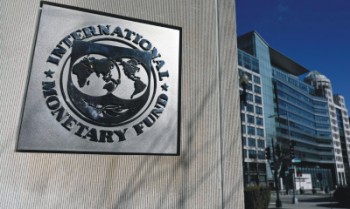
Introduction: Pakistan, a nation with a growing population and burgeoning economy, faces a severe and multifaceted energy crisis that hampers its development and quality of life. The energy crisis, characterized by chronic power shortages, high energy costs, and a reliance on imported fuels, has far-reaching implications for the country’s economic stability, industrial productivity, and social welfare. This article provides a detailed examination of the causes, impacts, and potential solutions to Pakistan’s energy crisis.
Historical Context and Background: The roots of Pakistan’s energy crisis trace back several decades. The country’s energy sector has struggled with inefficiencies and mismanagement, exacerbated by political instability and inconsistent policy frameworks. Initially, Pakistan relied heavily on domestic resources, including hydropower and natural gas. However, as demand grew and resources dwindled, the country became increasingly dependent on oil imports and borrowed energy solutions.
Key Factors Contributing to the Crisis
- Infrastructure Deficiencies: One of the primary causes of the energy crisis in Pakistan is outdated and inadequate infrastructure. The power generation capacity is insufficient to meet the rising demand, and existing power plants suffer from inefficiencies. Additionally, the transmission and distribution network is plagued by losses, which contribute significantly to the supply-demand imbalance.
- Energy Mix Imbalances: Pakistan’s energy mix is heavily skewed towards fossil fuels, with a significant reliance on imported oil and coal. The lack of diversification in energy sources has made the country vulnerable to global oil price fluctuations and geopolitical uncertainties. Despite the potential for renewable energy sources, such as solar and wind, their development has been slow and underfunded.
- Financial Mismanagement: The energy sector is plagued by financial mismanagement and governance issues. State-owned enterprises, such as Pakistan Electric Power Company (PEPCO) and Water and Power Development Authority (WAPDA), are burdened with inefficiencies and corruption. High levels of non-recovery of dues, circular debt, and delayed payments to fuel suppliers further exacerbate the financial woes of the energy sector.
- Policy and Regulatory Challenges: The lack of a coherent and consistent energy policy has hindered progress. Frequent changes in policy and regulatory frameworks, combined with a lack of long-term planning, have created an unstable environment for investment in the energy sector. Moreover, political interference and bureaucratic red tape have delayed critical projects and reforms.
- Climate Change and Environmental Issues: Pakistan is also affected by climate change, which impacts its water resources essential for hydropower generation. Droughts and erratic weather patterns reduce the availability of water in rivers, leading to lower hydropower output. Additionally, environmental regulations and sustainability concerns are often sidelined in favor of short-term solutions.
Impacts of the Energy Crisis
- Economic Impact: The energy crisis has a profound impact on Pakistan’s economy. Frequent power outages disrupt industrial production, leading to lower productivity and economic losses. The manufacturing sector, in particular, suffers from decreased competitiveness and increased operational costs. Businesses face higher energy bills, which in turn affect their profitability and growth prospects.
- Social and Humanitarian Impact: The energy crisis affects the daily lives of ordinary Pakistanis. Power outages disrupt households, schools, and healthcare facilities, leading to a diminished quality of life. Frequent load-shedding (planned power cuts) affects water supply, sanitation, and refrigeration, impacting public health and safety.
- Investment and Development: The unreliable energy supply deters both domestic and foreign investment. Investors are wary of entering markets with unstable power supplies, which hinders economic growth and development. Additionally, the energy crisis affects infrastructure development and public services, further impeding progress.
Potential Solutions and Future Directions
- Infrastructure Upgradation: Investing in modernizing and expanding the energy infrastructure is crucial. Upgrading power generation plants, improving transmission and distribution networks, and reducing energy losses can enhance efficiency and reliability. Development of smart grid technologies can also help in better managing energy distribution.
- Diversification of Energy Sources: Pakistan needs to diversify its energy mix to reduce reliance on imported fuels. Expanding the use of renewable energy sources such as solar, wind, and biomass can provide sustainable and cost-effective alternatives. Investment in research and development for new technologies and energy storage solutions is also essential.
- Policy Reforms and Governance: Implementing consistent and transparent energy policies can attract investment and foster sector growth. Reforms should focus on improving governance, reducing corruption, and ensuring efficient operation of state-owned enterprises. Addressing circular debt and enhancing financial management are also critical.
- Climate Adaptation Strategies: Developing strategies to mitigate the impact of climate change on water resources is essential. This includes investing in water conservation, improving irrigation techniques, and exploring alternative water sources. Additionally, promoting energy-efficient practices and technologies can help in reducing the overall energy demand.
- Public Awareness and Participation: Increasing public awareness about energy conservation and efficiency can lead to more responsible energy consumption. Engaging communities in energy-saving initiatives and encouraging behavioral changes can contribute to reducing the overall energy burden.
Conclusion: The energy crisis in Pakistan is a complex issue that requires a multifaceted approach to address. By investing in infrastructure, diversifying energy sources, implementing policy reforms, and adapting to environmental challenges, Pakistan can work towards resolving its energy challenges and securing a more stable and sustainable future. The path forward demands collaboration between the government, private sector, and civil society to achieve long-term solutions and ensure energy security for all.




